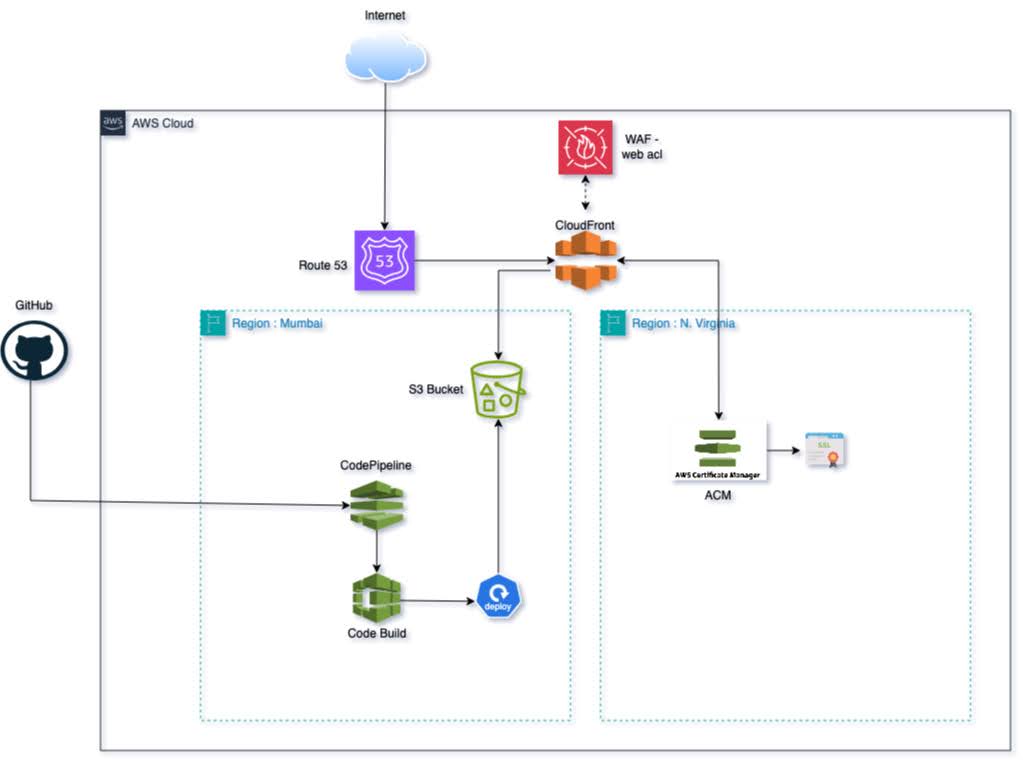Executive Summary
The client, a fast-growing behavioral videometrics platform specializing in quantitative video-based market research, faced critical challenges in performance, scalability, and deployment efficiency. Their frontend, previously hosted on an EC2 instance, struggled with latency issues, high infrastructure costs, and manual deployment inefficiencies that delayed feature releases.
To address these challenges, TechPartner implemented a comprehensive solution using AWS CloudFront, Amazon S3, AWS WAF, and AWS CodePipeline. This solution enhanced performance, strengthened security, reduced costs, and introduced a fully automated CI/CD pipeline to streamline deployments.
THE CLIENT’S CHALLENGE
Client’s platform experienced several obstacles that impacted performance and productivity:
- High Latency: Increasing global traffic caused slow page load times and degraded user experience.
- Server Overload: The frontend hosted on EC2 struggled to handle heavy traffic during peak hours, causing performance bottlenecks.
- Bandwidth Expenses: Direct content delivery from EC2 resulted in excessive data transfer costs.
- Scalability Issues: The existing infrastructure couldn’t efficiently scale to meet rising user demand.
- Security Vulnerabilities: Exposing the origin server’s IP address increased susceptibility to attacks.
- Manual Deployment Process: Deployments were manual, resulting in delays, human errors, and inconsistent releases.
TechPartner’s Solution: AWS CloudFront Implementation
ARCHITECTURE

TechPartner redesigned the client’s frontend infrastructure and deployment workflow using AWS services to improve performance, security, and automation.
Step-by-Step Implementation
- AWS CloudFront & Amazon S3 for Optimized Content Delivery
- CloudFront Distribution Setup: Configured CloudFront to efficiently deliver static and dynamic content.
- Amazon S3 as Origin: Migrated frontend assets to an Amazon S3 bucket, eliminating the EC2 dependency and reducing costs.
- Edge Caching & TTL Optimization: Optimized caching policies and TTL values to improve content freshness and reduce latency.
- Enhanced Security Measures
- AWS WAF Integration: Deployed AWS Web Application Firewall (WAF) with managed rules to protect against OWASP Top 10 threats, bot traffic, and SQL injections.
- CloudFront Origin Shield: Added Origin Shield for an extra caching layer, improving security and protecting the origin server from sudden traffic spikes.
- SSL/TLS Encryption: Integrated AWS Certificate Manager (ACM) to automate SSL certificate management and ensure secure content delivery.
- Automated CI/CD Pipeline with AWS CodePipeline
- CI/CD Pipeline Creation: Implemented AWS CodePipeline to automate build and deployment workflows.
- Automated Build Process: Configured AWS CodeBuild to compile frontend code automatically following every GitHub commit.
- Automatic Deployment to S3: After successful builds, artifacts were automatically deployed to the S3 bucket, ensuring seamless updates served via CloudFront.
- Logging & Monitoring
- Enabled CloudFront Access Logs for detailed traffic insights.
- Integrated AWS CloudWatch for real-time monitoring and performance tracking.
Impact of CloudFront Implementation
✅ 70% Reduction in Origin Traffic: CloudFront caching minimized origin requests, reducing server load.
✅ Faster Load Times: Leveraging AWS’s 450+ global edge locations improved content delivery speeds significantly.
✅ Enhanced Security: With AWS WAF, Origin Shield, and ACM-managed SSL/TLS encryption, security vulnerabilities were mitigated effectively.
✅ Automated Deployments: AWS CodePipeline introduced faster, consistent, and error-free deployment cycles.
✅ Cost Optimization: Migrating to Amazon S3 and leveraging CloudFront caching reduced infrastructure and bandwidth costs.
✅ Improved Developer Efficiency: Automated deployment workflows accelerated releases and minimized human intervention.



